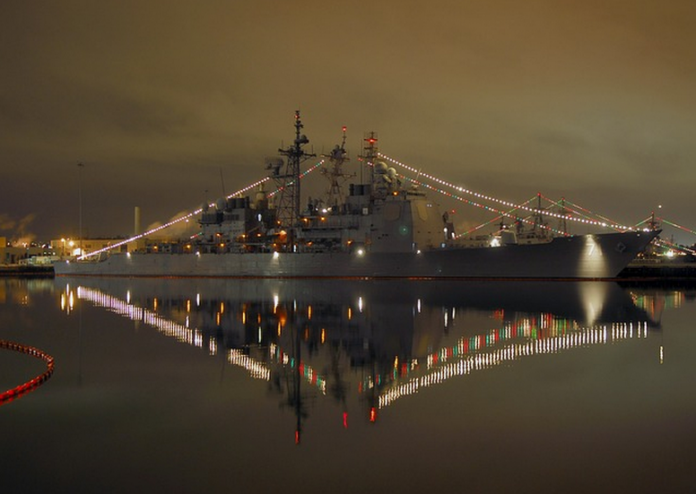[et_pb_section bb_built=”1″][et_pb_row][et_pb_column type=”4_4″][et_pb_text _builder_version=”3.0.100″ background_layout=”light”]
We often hear of the many benefits of LED lighting: Energy efficiency, longevity, low-maintenance… the list goes on. Marketing terms meant to sell the idea of LED may not be enough to persuade you, but perhaps a real-life example from the U.S. Navy can demonstrate the value that LED brings.
Secretary of the Navy Ray Mabus ordered the installation of LED lamps in all U.S. Navy ships currently under construction. This decision was made as part of a strategy designed to increase ships’ time on-station, decrease time spent on maintenance, and prevent shipboard injuries. Since LED lamps are brighter, longer-lasting, and more energy-efficient, Mabus says LEDs will increase the U.S. Navy’s ability “to provide the global presence that is vital to America’s national security and economic well-being.”
According to the Naval Sea Systems Command Business Case Analysis, LEDs use approximately 50 percent less energy and last up to five times longer than the conventional fluorescent lights typically used in U.S. Navy ships, To extend the amount of time between refueling for each ship, it’s imperative that they use the most energy-efficient options available. Conventional fluorescent bulbs require more energy, which subsequently drains the ship’s electrical load. According to Mabus, LEDs will save each ship an estimated two to three percent of the total fuel used.
Common shipboard injuries from slips, trips, and falls often occur when lamps are being replaced. An LED with a 50,000 hour lamp life would not have to be replaced for 11 years. The long life of LED lamps translates to 80 percent less time spent on ladders and lifts to replace lamps. With less time spent replacing lamps, the Navy Safety Center predicts the use of LEDs will decrease the amount of injuries. The longevity of the LED lamps will also reduce the number of replacement lamps needed to carry onboard, thereby freeing storage space to be allocated for other operational uses.
LEDs have already been installed on more than 170 Navy ships, with program managers and executive officers planning to continue installing them on new construction ships through a streamlined process.
[/et_pb_text][/et_pb_column][/et_pb_row][/et_pb_section]



